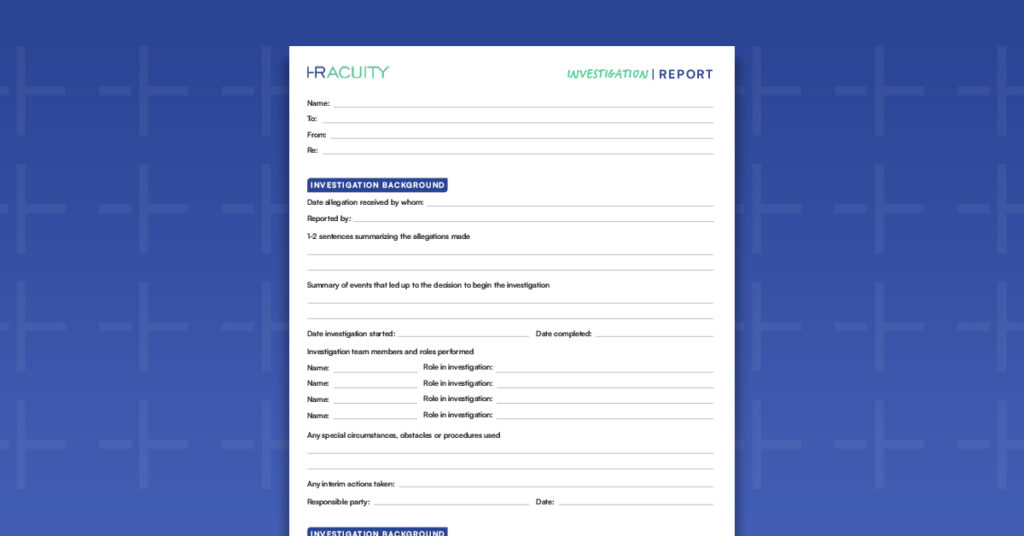Learn how to document employee-related investigation results using an investigation report template that also serves as a checklist to ensure you’ve got all the right information.
Workplace investigations are more common than ever today – and employee relations and HR leaders are taking them seriously.
Effective investigations start with detailed, defensible documentation that can be tracked, analyzed – and pointed back to over time.
What is a workplace investigation report?
A workplace investigation report provides a detailed record of information regarding an investigation. This is typically created by the investigator once a workplace investigation is determined necessary from a reported incident.
A workplace investigation report typically contains factual details regarding the accused allegations, thorough information regarding the investigation itself and conclusive notes. It does not include any biased opinion of involved parties (such as interviewees) or the investigator themselves.
How to use the HR investigation report template
When you’re in the thick of an investigation, having a reliable framework can make all the difference. That’s where this investigation report template can be most useful. It’s more than just a form—it’s your roadmap to conducting thorough, consistent and efficient investigations. Here’s how you can make the most of it:
Before you start the investigation: Use the template as a prep tool to map out what you need. It helps you organize preliminary details, such as who’s involved, what policies may be implicated and what evidence or documents to gather. Think of it as your investigation blueprint, ensuring you hit the ground running.
During the investigation: The template serves as a real-time guide. As you collect facts and conduct interviews, it ensures you’re capturing the right information. No more “Did I forget to ask that key question?” moments. Plus, its structured format helps you focus on uncovering the facts without getting bogged down in administrative headaches.
After the investigation: Wrapping up is a breeze with the template. It helps you compile findings, recommendations and next steps into a clear and professional report. You can be confident that all critical details are included and nothing important slips through the cracks. Need more tips on writing an investigation report? Check out our blog for more guidance on writing an effective investigation report.
Benefits of using an investigation report template
Leveraging a template comes with a host of benefits that simplify the process while ensuring top-notch results:
- Save time and boost efficiency: Skip the blank-page anxiety and jump straight into organizing facts. Templates eliminate redundant tasks, freeing up your time to focus on the investigation itself.
- Keep your investigation on track: The template doubles as a checklist, helping you stay organized and ensuring you don’t miss any critical steps or details.
- Ensure thoroughness: With fields designed to capture all necessary information, you’ll avoid the risk of incomplete reports or overlooked facts.
- Promote consistency across your team: Templates standardize your documentation and processes, making it easier to train new team members and maintain high-quality reporting.
- Strengthen credibility and compliance: A polished, consistent report not only looks professional but also helps protect your organization if your investigation is ever scrutinized.
Using the workplace investigation report template means you’ll spend less time reinventing the wheel and more time driving results.
Conduct fair, streamlined investigations with HR Acuity
Workplace investigation reports are crucial for documenting incidents, ensuring transparency and maintaining a fair work environment. They provide a structured way to capture all relevant details, findings and outcomes, which is essential for compliance and risk mitigation.
At HR Acuity, we understand the complexities of conducting thorough investigations and offer robust tools to streamline this process. Our case management software ensures consistency, accuracy and efficiency in every investigation.




